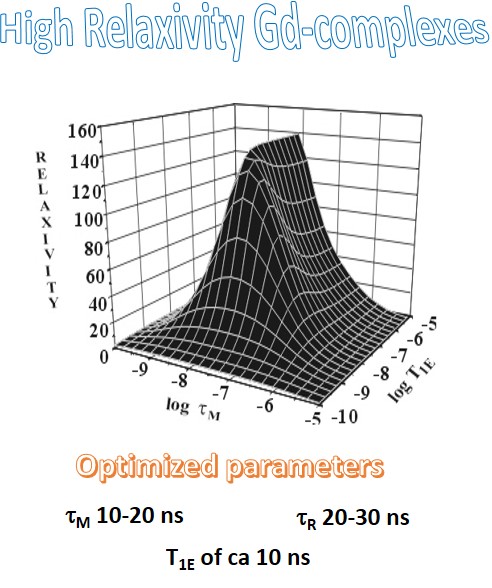The efficiency of a given paramagnetic complex is closely
related to its relaxivity. Relaxivity is the result of a
complex interplay between the paramagnetic center’s
structural, dynamic, and electronic properties. Good estimates
of the determinants of the relaxivity of a given paramagnetic
complex can be obtained from the analysis of relaxivity data
as a function of the applied magnetic field (NMRD profiles).
High relaxivities can be attained, at the clinical field
strength of 0.5-1.5 T, by lengthening the molecular
reorientational time, τR. Therefore, macromolecular systems
were addressed by either the covalent or noncovalent binding
of paramagnetic chelates to slowly moving substrates [Gianolio
E. et al 2014]. Another opportunity to increase
relaxivity is related to the use of bis-hydrated, but still
highly-stable, Gd-complexes
[Vagner A et al. 2016].
